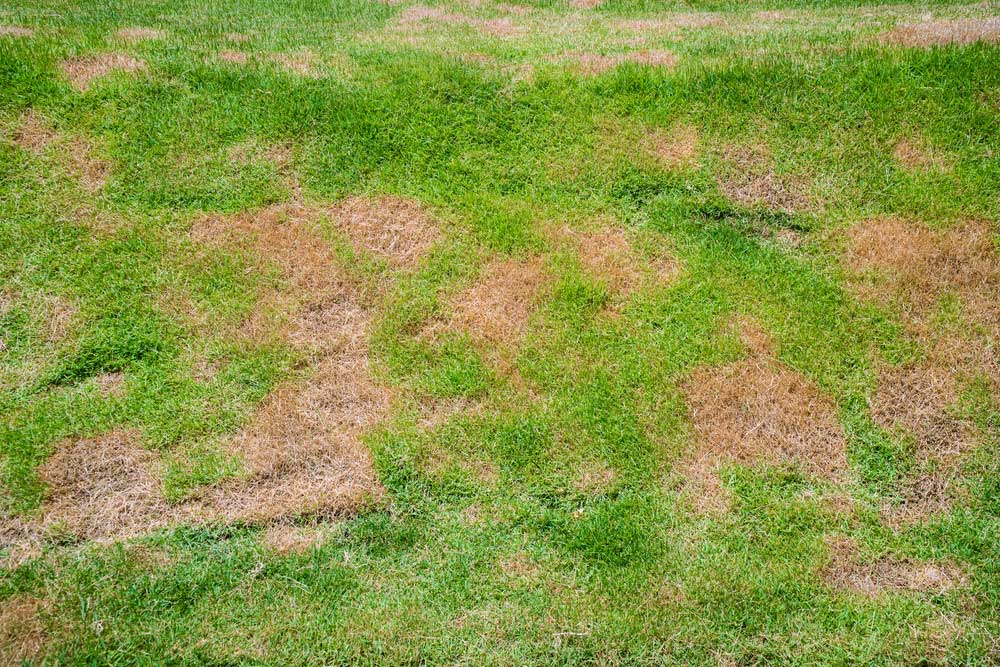Everyone loves a lush, green lawn. But sometimes, lawn diseases can ruin the beauty. This blog will help you identify and treat common lawn diseases. Keep reading to make your lawn healthy again.
Common Lawn Diseases
There are several lawn diseases you might encounter. Here are some common ones:
- Brown Patch
- Dollar Spot
- Rust
- Red Thread
- Powdery Mildew
Brown Patch
Brown patch disease is very common. It shows up as brown, circular patches on your lawn. These patches can be small or large.
Identification
Look for circular brown spots. They can be a few inches to several feet wide. The edges of the spots may look dark or wet.
Treatment
To treat brown patch, water your lawn in the morning. This helps grass dry out during the day. Also, avoid over-fertilizing. Use a fungicide if needed.
Dollar Spot
Dollar spot disease shows up as small, silver dollar-sized spots. These spots are usually tan or brown.
Identification
Look for small, circular spots. These spots can merge into larger areas. The grass may look dry or straw-colored.
Treatment
Water your lawn deeply and less often. This helps grass roots grow strong. Use nitrogen-rich fertilizer. Apply fungicide if needed.
Rust
Rust disease makes your grass look rusty. It’s caused by fungi that produce orange or yellow spores.
Identification
Check for orange or yellow dust on grass blades. Your shoes may get stained when you walk on the lawn.
Treatment
Water your lawn early in the morning. This helps grass dry out. Mow your lawn regularly. Fertilize your lawn to promote growth. Use fungicide if needed.
Red Thread
Red thread disease shows up as red or pink threads in your lawn. This disease is common in cool, wet weather.
Identification
Look for red or pink threads on grass blades. These threads can be up to 2 inches long. The grass may look thin or weak.
Treatment
Water your lawn early in the morning. This helps grass dry out. Fertilize your lawn with nitrogen. Mow your lawn regularly. Use fungicide if needed.
Powdery Mildew
Powdery mildew looks like white powder on grass blades. It’s common in shady areas with poor air circulation.
Identification
Look for white, powdery spots on grass blades. The grass may look weak or stunted.
Treatment
Improve air circulation by trimming nearby plants. Water your lawn early in the morning. Fertilize your lawn to promote growth. Use fungicide if needed.

Credit: teetimelawncare.com

Credit: americanlandscapesllc.com
Prevention Tips
Preventing lawn diseases is easier than treating them. Here are some tips to keep your lawn healthy:
| Tip | Description |
|---|---|
| Water Properly | Water your lawn deeply and less often. Water in the early morning. |
| Mow Regularly | Keep your grass at the right height. Don’t cut more than one-third of the grass blade. |
| Fertilize | Use the right amount of fertilizer. Too much or too little can cause problems. |
| Aerate | Aerate your lawn to improve air circulation and water penetration. |
| Remove Thatch | Thatch is a layer of dead grass. Remove it to allow water and nutrients to reach the soil. |
Frequently Asked Questions
What Causes Lawn Diseases?
Lawn diseases are typically caused by fungi, bacteria, or environmental stress.
How To Identify Brown Patches?
Brown patches appear as irregular, discolored areas on your lawn, often with a distinct border.
Can Overwatering Lead To Lawn Diseases?
Yes, overwatering creates a moist environment that promotes fungal growth.
What Are Common Signs Of Lawn Disease?
Common signs include discolored patches, thinning grass, and fungal growth.
Conclusion
Identifying and treating lawn diseases is important. It keeps your lawn looking beautiful. Follow these tips to keep your grass healthy and green. Happy lawn care!
